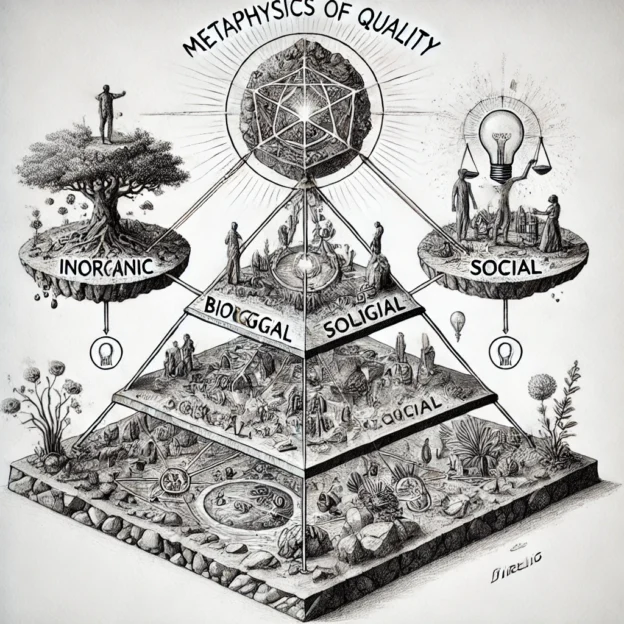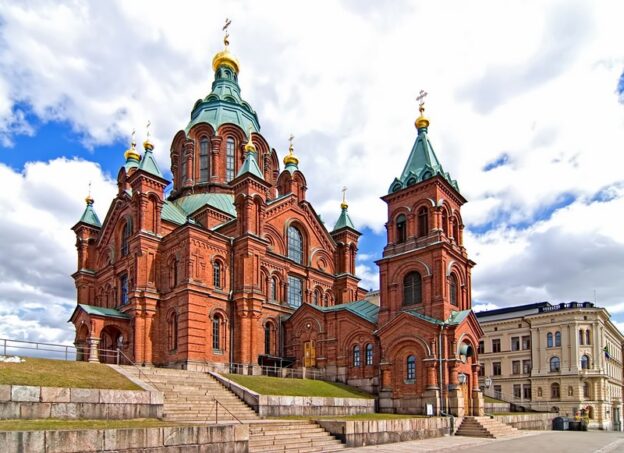The Zen Koan of the Tigers and the Strawberry is a classic story that invites reflection on mindfulness and presence.
Continue reading

The Zen Koan of the Tigers and the Strawberry is a classic story that invites reflection on mindfulness and presence.
Continue reading
Lucy Bulley joined the Cyber Runway Scale programme to discuss the critical elements of team-building and organisational structure when preparing for Series A funding. She shared practical insights on hiring strategies, leadership development, and scaling operations to support high-growth cybersecurity startups.
Continue reading
The history of weight loss and diabetes treatments is a fascinating tale of scientific discovery, human ingenuity, and the unyielding quest to tackle some of the most pervasive health challenges of our time. Over the centuries, societies have sought remedies for obesity, diabetes, and the complex interplay between the two, now commonly referred to as “diabesity.” This article explores the evolution of weight loss medications, the rise of diabesity, and how a venomous desert lizard, the Gila monster, inspired one of the most revolutionary diabetes and weight management drugs, Mounjaro.
Continue reading
Personality typing systems are everywhere these days, especially in workplaces. From the ever-popular Myers-Briggs to Business Chemistry, DISC, and Gallup Strengths, each claims to offer a profound insight into who we are and how we work. These frameworks are treated as gospel by many organisations and used to guide hiring, team building, and personal development. But here’s the problem: much of it is bollocks, and for those who are neurodivergent, it’s even worse.
Continue reading
This article revisits Abraham Maslow’s Hierarchy of Needs, exploring its foundational principles and questioning its relevance in capturing the complexity of human motivation. Drawing on Robert Pirsig’s critique in Zen and the Art of Motorcycle Maintenance and Lila: An Enquiry into Morals, Michel Foucault’s insights into societal structures, and the Japanese concept of Ikigai, it challenges the rigidity of Maslow’s model. Pirsig’s Metaphysics of Quality offers a dynamic alternative, emphasising fluidity, interconnectedness, and the pursuit of quality as central to human fulfilment.
Continue reading
Every day, a new headline emerges about artificial intelligence (AI), promising either salvation or doom. From “AI will replace all jobs” to “AI will cure cancer,” the relentless marketing of AI solutions can make it seem like we’re on the brink of a utopia, or dystopia, depending on who you ask. But amidst all the buzz and excitement, a lot of it is, frankly, bollocks.
Continue reading
In the heart of England, where motorways snake and twist through Birmingham, there lies a structure that transcends the ordinary into the extraordinary. Its official name is the Gravelly Hill Interchange, but to the millions who traverse it, to those who marvel at its intricate design, and those who swear at missing their turning, it is simply known as Spaghetti Junction. Its beauty is terrible to behold, like the Angels of old, and is truly Ballardian. More than a mere motorway interchange, Spaghetti Junction is, in many ways, the greatest piece of post-modern art. Ever.
Continue reading
Suprematism, a radical art movement born in early 20th-century Russia, marked a significant departure from traditional artistic expressions. Founded by Kazimir Malevich in 1915, Suprematism embraced geometric abstraction as a way to transcend the material world and express pure feeling. This article explores the historical roots of Suprematism in Russian iconography and its evolution into post-iconographic art.
Continue reading
This article explores the principles and practices of GAAP (Generally Accepted Accounting Principles), inspired by discussions on financial transparency and standardisation in accounting. It outlines the key features of GAAP, such as accrual-based accounting, comprehensive reporting, and compliance, while addressing its benefits in fostering investor trust and comparability across industries. The article also discusses the challenges businesses face in implementing GAAP and the potential solutions, such as affordable tools, to ease the transition. By balancing its advantages and hurdles, the article underscores the critical role of GAAP in business growth and strategic exits.
Continue reading
Planning a successful business exit requires foresight, preparation, and a clear strategy. This article provides a structured roadmap to help businesses optimise their value, mitigate risks, and prepare for smooth transitions, whether through trade sales, private equity (PE), or IPOs. This guide distils complex processes into actionable advice tailored to small and medium-sized businesses (SMBs). It covers essential aspects like valuation drivers, transaction types, due diligence, and benchmarking while addressing common challenges faced by founders during the exit process.
Continue reading
In this Cyber Runway Scale session, Tom Glason and Munya Hoto of ScaleWise shared insights into how startups can leverage marketing to attract investment and strategic partnerships. The discussion covered branding, lead generation, and digital strategies that drive deal flow for early-stage cyber companies.
Continue reading
With the Slush conference drawing entrepreneurs and innovators from around the world, Helsinki in November is a fascinating city to explore. While my primary focus will be on networking and attending sessions, I can’t help but plan for some downtime to experience what this Nordic capital has to offer. Though I know time will be limited, it’s always good to dream a little.
Continue reading
Slush, one of the world’s leading startup and tech conferences, has grown from a small gathering of Finnish entrepreneurs to a global movement fostering innovation, entrepreneurship, and investment in startups. Held annually in Helsinki, Finland, Slush has become a must-attend event for entrepreneurs, investors, and tech enthusiasts from across the globe. The journey of Slush from its humble beginnings to its current status as a global innovation hub is a fascinating story of vision, community, and passion for technology.
Continue reading
This article, the culmination of my reflections on the myth of the West, deconstructs the utopian dream of the Western frontier, exploring its evolution from Manifest Destiny to Silicon Valley. Through historical analysis, literary critiques, and a look at Hollywood’s portrayal of the West, it examines how the promise of freedom and opportunity often fell short, revealing the complexities of the Western ideal. For me, this myth resonates deeply, intertwined with personal influences like Celtic romanticism, family legacies, and cross-cultural inspirations from Kurosawa.
Continue reading
This article summarises Nicole Bucala’s insights on building effective partnerships in the fragmented cybersecurity industry, shared during the Cyber Runway: Scale programme. It explores key strategies, including sell-through, sell-with, and ecosystem integrations, alongside practical advice for startups on fostering relationships, creating mutual value, and timing partnerships effectively.
Continue reading
This article examines the evolution of Western cinema through different “ages,” based on Alex Cox’s model of Traditional, Gritty, and Comedic Westerns, and explores whether additional phases, like the Neo-Western and Hybrid Western, might add depth to this framework. From the straightforward morality of early Westerns to the genre-blending explorations of the modern era, we trace the key films and themes that defined each age, examining how the Western has adapted to reflect changing societal values and cinematic tastes.
Continue reading
Explore how pulp magazines and dime novels of the 19th and early 20th centuries popularized the Western myth, creating iconic characters and moral archetypes that would shape the genre. Discover the roots of cowboy legends and the role these stories played in building America’s frontier mythology.
Continue reading
This article explores the transformative potential of low-code and AI technologies in business departments, highlighting their ability to democratise innovation, enhance agility, and reduce costs. However, it also underscores the risks of shadow IT, security vulnerabilities, and scalability challenges if proper governance is not in place. By establishing clear frameworks, fostering collaboration between IT and business units, and maintaining ethical oversight, organisations can harness the benefits of these tools while safeguarding operational integrity and long-term success.
Continue reading
This article delves into the concept of “The Western Lands” as an enduring myth across cultures and eras. Using William S. Burroughs’ The Western Lands as a springboard, it explores ancient mythologies, from Celtic voyages and Arthurian legends to Greek Elysium and Tolkien’s Undying Lands. Through these interpretations, the Western Lands emerge as symbols of humanity’s deepest longings for transcendence, ultimate peace, and the mysteries that lie beyond the known world.
Continue reading
This article investigates the shifting portrayals of Native Americans within the Western genre, from early stereotypes to complex characters. Understand how these representations reflect changing cultural attitudes and the growing recognition of Native perspectives in the Western narrative.
Continue reading